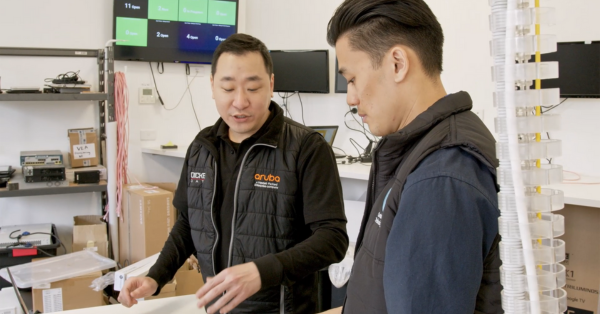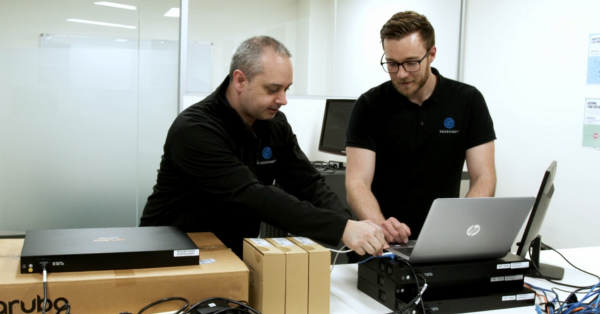Teleworking: The future norm for Australian businesses?
Not too long ago, teleworking was an aspiration for most employees – today it’s the reality for over 88% of global businesses. In Australia, it’s even shaping up to become the future norm. According to a recent McCrindle survey, over 80% of Australians stated they would stay loyal to existing employers if they offered remote flexibility, with over half willing to even take a pay cut.
Similarly, assessments by tech giants Atlassian correlate teleworking availability to how well businesses attract talent and rapidly scale. Over 51% of businesses found it also reduced operational overheads. Evidently, teleworking isn’t just a “nice-to-have” for employees: it could also help businesses minimise workforce disruption and recover financially post-crisis.
The right remote access infrastructure can help your customers emerge more connected, secure, and agile than they were going in. Most, however, will need clear guidance through certain implementation challenges and the technical choices that come with them.
Local networks and tempers will be tested
Going down the teleworking route means employees are swapping dependable and stable enterprise networks for the variable performance of home or public Wi-Fi connections. Disruptions can be expected, as the limited bandwidth of these connections hampers a remote worker’s connectivity to crucial cloud-based collaboration tools or resources. Consider how the National Broadband Network experienced bandwidth spikes of up to 80% since lockdowns began.
One way to resolve the “bandwidth crunch” is to provide direct connections to enterprise networks via remote access points (RAPs). Remote devices like the compact Aruba AP-303H offer high-speed 802.11ac wide channels that allow for faster data transmissions on high-speed 5GHz and 2.4GHz wireless bandwidth bands, which provides dependable performance for bandwidth-heavy software or video conferencing applications. Consider discussing access point deployments with your customer and identifying how you can support such deployments into employees’ homes where necessary.
The footprint of cyber threats will expand
You can’t mention teleworking without also raising the issue of cybersecurity. In 2019, over 30% of network breaches were initiated at the network’s edge through methods like phishing. The recent data leaks by a popular teleconference provider only serve to aggravate concerns businesses may have towards the cyber risks of teleworking. Moving forwards, a solution that balances the benefits of teleworking and greater networks security is needed.
Businesses can begin building greater cybersecurity from the core to the edge of their networks by screening any inbound wireless traffic through gateways like Aruba’s 7000 Series Mobility Controllers. With built-in firewalls and the ability to set role-based permissions, these mobility controllers allow for the accurate isolation and segmentation of inbound wireless traffic from remote devices or access points. However, your customers may still require guidance on how to craft and enforce separate security policies for remote access devices, a process made relatively simple with the right Aruba deployment.
Heightened network management is mandatory
Another question that will emerge is if business IT can maintain rigorous monitoring of both internal and external connections to the network – and act proactively when issues occur. As their remote workforce inevitably grows, businesses will see the need to unify management of multiple devices, access points, applications, and connection types under one platform, simplifying network orchestration and deployment.
Establishing good IT management practices now – as remote working is gaining traction – will allow businesses to stem the tide of complexity before it becomes a problem. Unified network management solutions like Aruba Central feature zero-touch provisioning capabilities, for speedy deployment and configuration of new devices or access points. It’s also built for SD-WAN orchestration, allowing for integrated monitoring and management of gateways, multiprotocol label switches, device types and virtual private networks. This allows businesses like Balboa Capital to provide constant uptime for their cloud-based workforce, whilst simultaneously managing the growing number of devices on their wide-area network.
Now that they have tasted the flexibility, and seen that it’s possible to do their jobs remotely, Australians will undoubtedly demand teleworking options. There’s no better time to start a conversation with enterprise customers on how to support those employee expectations – keeping their people safe and productive with the right infrastructure. Find out more about Aruba’s remote access technologies, or contact the Aruba team at Dicker Data today.









